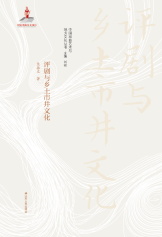
主要责任者: 焦振文
责任方式: 著
出版者: 江苏人民出版社
出版地: 南京
字数: 248 千字
页码: 1-285
开本: 16
中图分类号: J825.22
语种:中
定价:85.00
出版时间:2020-04
丛书多卷书否:是
丛书名:中国戏曲艺术与地方文化丛书
丛书责任者:刘祯
丛书责任方式:主编
书目简介:本册工具书是中国戏曲艺术与地方文化丛书之一,共收录66条词条。
被引频次:2
| 词条 | 评剧与乡土市井文化 |
| 类别 | 中文百科知识 |
| 释义 |  主要责任者: 焦振文 责任方式: 著 出版者: 江苏人民出版社 出版地: 南京 字数: 248 千字 页码: 1-285 开本: 16 中图分类号: J825.22 语种:中 定价:85.00 出版时间:2020-04 丛书多卷书否:是 丛书名:中国戏曲艺术与地方文化丛书 丛书责任者:刘祯 丛书责任方式:主编 书目简介:本册工具书是中国戏曲艺术与地方文化丛书之一,共收录66条词条。 被引频次:2 |
| 随便看 |
开放百科全书收录579518条英语、德语、日语等多语种百科知识,基本涵盖了大多数领域的百科知识,是一部内容自由、开放的电子版国际百科全书。